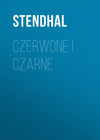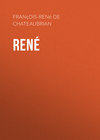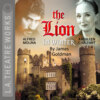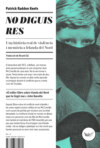Kitabı oku: «Say Nothing», sayfa 4
The spectacle of women as avatars of radical violence may have felt bracingly novel, but in other parts of the world, such figures were finding a place in the iconography of revolution. While Belfast was burning in the summer of 1969, a twenty-five-year-old Palestinian terrorist named Leila Khaled hijacked a TWA flight from Rome to Tel Aviv and, with it, the attention of the world. Khaled diverted the flight to Damascus, becoming the first woman to hijack a plane. She emerged as a kind of pin-up for the new militancy. Her photo was splashed across glossy magazines, her dark eyes and cut-glass cheekbones framed by a keffiyeh, an assault rifle clutched in her hands. A few years later, a famous photo captured the American heiress Patty Hearst brandishing a sawn-off carbine and wearing a beret. One close friend of Dolours Price’s suggested that at least part of the allure for her, in those years, was ‘rebel chic’.
Stories about the Price sisters began to circulate among British troops stationed in Belfast and to find their way into the accounts of visiting war correspondents. They developed an outsize reputation as deadly femmes fatales who would venture into the mean streets of Belfast with an assault rifle hidden ‘down a bell-bottomed trouser leg’. Marian was said to be an expert sniper and was referred to, among British squaddies, as ‘the Widowmaker’. Dolours would become known in the press as ‘one of the most dangerous young women in Ulster’.
It is hard to judge how seriously to take such folklore. Some of it was the kind of frisky sexualised rumour that occasionally circulates in times of violent upheaval. A society that had always been a bit fusty and repressed was suddenly splitting apart in the most cataclysmic fashion. The perceived threats of sexual liberation and paramilitary chaos converged in the mythical spectre of a pair of leggy, rifle-toting libertines.
But if this image was to some degree a battlefield fantasy, one of the key people projecting it was Dolours Price herself. ‘Would you like to be shown round our bomb factory?’ she asked a visiting reporter in 1972, adding, ‘We had Paris Match magazine taking pictures of the place last week.’ Eamonn McCann, the activist from Derry who befriended Price on the Burntollet march, would still see her from time to time. She never told him explicitly that she had joined the Provos, but McCann knew. He was dismayed. He desperately wanted revolutionary change in Ireland, but he was certain that violence was not the way to achieve it. He told his friends who joined the armed struggle, ‘Nothing is going to come out of this that is commensurate with the pain that you will put into it.’
When he saw Price, McCann was always struck by her sheer glamour. Most of the republican women he had known growing up were stern and pious – if not the Virgin Mary, exactly, then the Virgin Mary with a gun. The Price sisters were something else altogether. Dolours always dressed elegantly, her hair and makeup impeccable. ‘They were sassy girls,’ McCann recalled. ‘They weren’t cold-eyed dialecticians or fanatics on the surface. There was a smile about them.’ In those days there was a discount shop in Belfast called Crazy Prices, and, inevitably, Dolours and Marian became known among their friends as the Crazy Prices.

Dolours Price, photographed for the Italian magazine L’Europeo (© L›Europeo RCS/ph.Stefano Archetti)
Once, officers from the Royal Ulster Constabulary barged into the house on Slievegallion Drive at six in the morning and announced that they were arresting Dolours as a suspected member of an illegal organisation. ‘She’s not going out of here until she’s had her breakfast,’ Chrissie said. The police, cowed by this small but formidable woman, agreed to wait, and Chrissie instructed her daughter to go and put on makeup. She was buying time so that Dolours could collect her wits. When Dolours was ready to go, Chrissie put on a fur coat, which she normally reserved for special occasions. ‘I’m going with her,’ she announced.
For a moment, Dolours was embarrassed, thinking, I’m in the IRA and my mother is coming with me to get arrested. But off they went. At Castlereagh police station, she was interrogated. She knew the rules, however, and she gave the police no information, repeating only ‘I have nothing to say.’ Eventually, she was released without charges. It would be difficult to make a case against Dolours: after all, she was still a student, with good marks and an attendance record to show for it. Before they left the station, Chrissie paused to admire the mug shot that the police had taken of her daughter.
‘Can I keep that?’ she deadpanned. ‘That’s a nice one.’
As a fund-raising initiative, the Provos took to robbing banks. Lots of banks. One day in the summer of 1972, three fresh-faced nuns walked into a branch of the Allied Irish Bank in Belfast just as it was about to close. The nuns reached under their habits and came out with guns – then proceeded to hold up the place. It was the Price sisters, along with another female volunteer. A month after the original robbery, three women walked into the very same bank and robbed it again. (The identity of the thieves was never ascertained, but it was tempting to wonder whether the sisters had not returned for seconds.) On another occasion, Dolours hijacked a post office lorry, because the IRA had received intelligence that it was transporting sacks of money.
For all the horror unfolding around them, there was a sense of adventure for Dolours and her comrades, a fantasy that they were dashing outlaws in a society in which all order had broken down. When one of Dolours’s close colleagues in the IRA, a man named James Brown, was taken from prison to a hospital in Antrim with a burst appendix, the Price sisters carried out an audacious rescue mission, raiding the hospital, disarming the policemen there, and springing Brown free. It was a small miracle that the sisters managed to evade apprehension by the army or the police. Perhaps their ability to play the part of demure Catholic schoolgirls whenever they were confronted was enough to divert suspicion. But the authorities were also simply overwhelmed by the level of violence during this period.
The ranks of the Provos were filled with interesting characters. Dolours became friendly with an older man named Joe Lynskey, who had grown up on Cavendish Street, off the Falls Road, and still lived with his parents and his sister as he neared his fortieth birthday. Lynskey had trained as a monk during the 1950s, at an abbey in Portglenone, taking a vow of silence and rising before dawn each morning to pray. But he ended up leaving the order and joining the IRA. Lynskey was a bit of an overgrown child, having sat out his adolescence at the monastery. He was regarded as something of an oddball by the younger volunteers. They called him the ‘Mad Monk’. But he had kind eyes and a gentle manner, and Dolours grew very fond of him.
Another person Price became associated with was a tall, angular young man named Gerry Adams. He was an ex-bartender from Ballymurphy who had worked at the Duke of York, a low-ceilinged pub in the city centre that was popular with labour leaders and journalists. Like Price, Adams came from a distinguished republican family: one of his uncles had broken out of Derry jail with her father. Adams had got his start as an activist with a local committee that protested against the construction of Divis Flats. He never attended college, but he was a fearsome debater, smart and analytical, like Dolours. He had joined the IRA a few years before she did, and he was already rising quickly through the Belfast leadership.

Gerry Adams (Kelvin Boyes/Camera Press/Redux)
Price had been loosely acquainted with Adams since childhood. When they were both kids, she used to see him riding with his family on the same buses she did, to republican commemorations at Edentubber or Bodenstown. But now he had reappeared as a firebrand. The first time she recognised him on the back of a lorry, addressing a crowd, she exclaimed, ‘Who does Gerry think he is, standing up there?’ Price found Adams intriguing, and faintly ridiculous. He was a ‘gawky fella with big black-rimmed glasses’, she would recall, and he had a quiet, watchful charisma. Price was irrepressibly outgoing, but she found it difficult to get a conversation started with Adams. He carried himself with an aloof air of authority and referred to her, affectionately, as ‘child’, though he was only a couple of years older than she was. The day after Price sprang James Brown from the hospital, Adams expressed concern about her operational security. ‘It said in the paper that the women were not wearing disguises,’ he murmured, adding reproachfully, ‘I hope that isn’t true.’
Price assured him that the press account was inaccurate, because the sisters had been decked out in blonde wigs, bright lipstick and garish head scarves, ‘like two whores at a hockey match’. Adams took himself pretty seriously, Price thought. But she could laugh at anyone. For security, Adams did not sleep in his own home, and would bed down instead in various billets, some of which were not homes at all, but local businesses. He had taken to sleeping, lately, at a West Belfast undertaker’s. Price found that hilarious. She joked that he slept in a coffin.
‘It was an exciting time,’ she said later. ‘I should be ashamed to admit there was fun in it.’ But there was. She had only just turned twenty-one. Another family might disapprove of what Dolours and Marian were doing, but to Albert and Chrissie Price, there was a sense in which the girls were simply taking up a household tradition, and while you could blame a man for hitting someone, you could not blame him for hitting back. ‘The Provo army was started by the people to set up barricades against the loyalist hordes,’ Albert explained at the time. ‘We beat them with stones at first, and they had guns. Our people had to go and get guns. Wouldn’t they have been right stupid people to stand there? Our people got shotguns at first and then got better weapons. And then the British, who were supposed to protect us, came in and raided our homes. What way could you fight? So you went down and you blew them up. That was the only thing left. If they hadn’t interfered with us, there probably would be no Provo army today.’
When British troops were killed, Albert would freely acknowledge the humanity of each individual soldier. ‘But he is in uniform,’ he would point out. ‘He is the enemy. And the Irish people believe that this is war.’ He was against death, he insisted, but ultimately this was a question of means and ends. ‘If we get a united socialist Ireland,’ Albert Price concluded, ‘then maybe it will all have been worth it.’
As if to underline the futility of nonviolent resistance, when Eamonn McCann and a huge mass of peaceful protesters assembled in Derry one chilly Sunday afternoon in January 1972, British paratroopers opened fire on the crowd, killing thirteen men and wounding fifteen others. The soldiers subsequently claimed that they had come under fire and that they only shot protesters who were carrying weapons. Neither of these assertions turned out to be true. Bloody Sunday, as it would forever be known, was a galvanising event for Irish republicanism. Dolours and Marian were in Dundalk when they heard reports of the massacre. The news filled them with an overpowering anger. In February, protesters set fire to the British embassy in Dublin. In March, London suspended the hated Unionist parliament in Northern Ireland and imposed direct rule from Westminster.
That same month, Dolours Price travelled to Italy to speak in Milan and help to spread the word about oppression of Catholics in Northern Ireland. She lectured about ‘the ghetto system’ and the lack of civil rights. ‘If my political convictions had led me to take part in murder, I would confess without hesitation,’ she told an interviewer, employing the sort of deliberately evasive syntactical construction that would become typical when people described their actions in the Troubles. ‘If I had been commanded to go to kill an enemy of my people I would have obeyed without the slightest fear.’ In a photograph from her appearance there, Price posed like an outlaw, with a scarf pulled across her face.
5
St Jude’s Walk
The McConville family had two dogs, named Provo and Sticky. After Arthur passed away, his oldest son, Robert, might have stepped in to assume responsibility for the family, but in March 1972, when he was seventeen, Robert was interned on suspicion of being a member of the Official IRA – the Stickies. Jean McConville, who had been delicate by temperament to begin with, fell into a heavy depression after her husband’s death. ‘She had sort of given up,’ her daughter Helen later recalled. Jean did not want to get out of bed and seemed to subsist on cigarettes and pills. Doctors in Belfast had taken to prescribing ‘nerve tablets’ – sedatives and tranquillisers – to their patients, many of whom found that they were either catatonically numb or crying uncontrollably, unable to get a handle on their emotions. Tranquilliser use was higher in Northern Ireland than anywhere else in the United Kingdom. In some later era, the condition would probably be described as post-traumatic stress, but one contemporary book called it ‘the Belfast syndrome’, a malady that was said to result from ‘living with constant terror, where the enemy is not easily identifiable and the violence is indiscriminate and arbitrary’. Doctors found, paradoxically, that the people most prone to this type of anxiety were not the active combatants, who were out on the street and had a sense of agency, but the women and children stuck sheltering behind closed doors. At night, through the thin walls of their flat in Divis Flats, the McConville children would hear their mother crying.
Increasingly, Jean became a recluse. Some weeks, she would leave the house only to buy groceries or to visit Robert in prison. It might have simply felt unsafe to venture out. There was a discomfiting sense in Belfast that there was no place where you were truly secure: you would run inside to get away from a gun battle, only to run outside again for fear of a bomb. The army was patrolling Divis, and paramilitaries were dug in throughout the complex. The year 1972 marked the high point for violence during the entirety of the Troubles – the so-called bloodiest year, when nearly five hundred people lost their lives. Jean made several attempts at suicide, according to her children, overdosing on pills on a number of occasions. Eventually, she was admitted to Purdysburn, the local psychiatric hospital.
Nights were especially eerie in Divis. People would turn out all their lights, so the whole vast edifice was swathed in darkness. To the McConville children, one night in particular would forever stand out. Jean had recently returned from the hospital, and there was a protracted gun battle outside the door. Then the shooting stopped and they heard a voice. ‘Help me!’ It was a man’s voice. Not local.
‘Please, God, I don’t want to die.’ It was a soldier. A British soldier. ‘Help me!’ he cried.
As her children watched, Jean McConville rose from the floor, where they had been cowering, and moved to the door. Peeking outside, she saw the soldier. He was wounded, lying in the gallery out in front. The children remember her re-entering the flat and retrieving a pillow, which she brought to the soldier. Then she comforted him, murmuring a prayer and cradling his head, before eventually creeping back into the flat. Archie – who, with Robert in prison, was the oldest child there – admonished his mother for intervening. ‘You’re only asking for trouble,’ he said.
‘That was somebody’s son,’ she replied.
The McConvilles never saw the soldier again, and to this day the children cannot say what became of him. But when they left the flat the next morning, they found fresh graffiti daubed across their door: BRIT LOVER.
This was a poisonous allegation. In the febrile atmosphere of wartime Belfast, for a local woman to be seen consorting with a British soldier could be a dangerous thing. Some women who were suspected of such transgressions were subjected to an antique mode of ritual humiliation: tarring and feathering. A mob would accost such women, forcibly shave their heads, anoint them with warm and sticky black tar, then shower a pillowcaseful of dirty feathers over their heads and chain them by the neck to a lamppost, like a dog, so that the whole community could observe the spectacle of their indignity. ‘Soldier lover!’ the mob would bray. ‘Soldier’s doll!’
In an environment where many married men were being locked up for long stretches, leaving their wives alone, and where cocky young British soldiers were patrolling the neighbourhoods, deep-seated fears of infidelity, both marital and ideological, took hold. Tarring and feathering became an official policy of the Provisional IRA, which the leadership publicly defended as a necessary protocol of social control. When the first few cases turned up at local hospitals, the befuddled medical personnel had to consult with the maintenance crews who took care of their buildings about the best method for removing black tar.
It felt to Michael McConville as if he and his family were strangers in a strange land. Expelled from East Belfast for being too Catholic, they were outsiders in West Belfast for being too Protestant. After their home was marked with the graffiti, what few local friends they had no longer wanted anything to do with them. Everywhere they turned, they found themselves in an adversarial situation. Archie was badly beaten by the youth wing of the Provos and had his arm broken for refusing to join the organisation. Helen and a friend were harassed by a regiment of soldiers. Helen would later suggest that her mother may have further alienated the family from their neighbours by declining to take part in ‘the chain’, the hand-to-hand system for hiding weapons during police searches of the complex; Jean feared that if she was caught with a gun in the house, she might lose another child to prison. At a certain point, the family dogs, Provo and Sticky vanished. Someone had shoved the animals down a rubbish chute, where they died.
Michael had asthma, and Jean worried that the gas heating in the flat was aggravating it. She requested a transfer, and the family was granted a new flat, in another section of Divis Flats called St Jude’s Walk. They packed their belongings and made the short move into the new space. It was slightly larger than the previous one, but otherwise not much different.
Christmas was coming, but the city was hardly festive. Many shops were boarded up and closed, because they had been bombed. Jean McConville’s only indulgence in those days was a regular excursion to play bingo at a local social club. Whenever she won anything, she would give the children twenty pence each. Occasionally, she would bring home enough to buy one of them a new pair of shoes. One night after the family had moved into the new flat, Jean went with a friend to play bingo. But on that particular evening, she did not come home.
Shortly after 2 a.m., there was a knock at the door. It was a British soldier, who informed the McConville kids that their mother was at a barracks nearby. Helen raced to the barracks and found Jean, bedraggled and shoeless, her hair all over the place. Jean said that she had been at the bingo hall when someone came in and told her that one of the children had been hit by a car, and that someone was waiting outside to take her to the hospital. Alarmed, she left the bingo hall and got into the car. But it was a trap: when the door opened, Jean was pushed onto the floor and a hood was placed over her head. She was taken to a derelict building, she said, where she was tied to a chair, beaten and interrogated. After she was released, some army officers found her wandering the streets, distressed, and brought her to the barracks.
Jean couldn’t – or wouldn’t – say who it was that had abducted her. When Helen wondered what kinds of questions they had been asking, Jean was dismissive. ‘A load of nonsense,’ she said. ‘Stuff I knew nothing about.’ Jean could not sleep that night. Instead she sat up, her face bruised, her eyes black and blue, and lit one cigarette after another. She told Helen that she missed Arthur.
The children would later recall that it was the following evening that Jean sent Helen out to fetch fish and chips for dinner. She filled a bath, to try to soothe the pain of the beating she had taken the night before. As Helen was leaving, she said, ‘Don’t be stopping for a sneaky smoke.’
Helen made her way through the labyrinthine passages of Divis to a local takeaway where she ordered dinner and waited for it. When the food was ready, she paid, took the greasy bag, and started to walk back. As she entered the complex, she noticed something strange. People were loitering on the balconies outside their flats. This was the sort of thing that local residents did in the summertime. There were so few places for recreation in Divis that kids would play ball on the balconies and parents would hang about on temperate evenings, leaning in the doorways, gossiping over cigarettes. But not in December. As Helen got closer to the new flat and saw the people gathered outside, she broke into a run.











